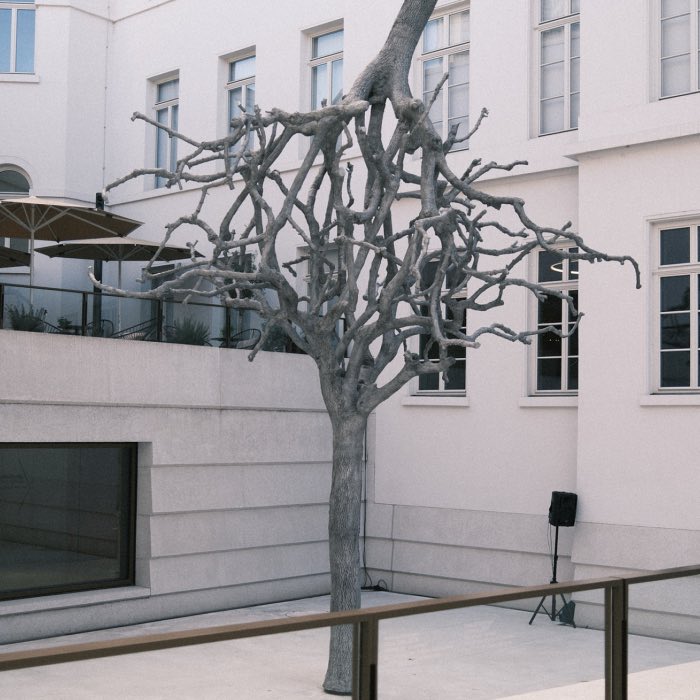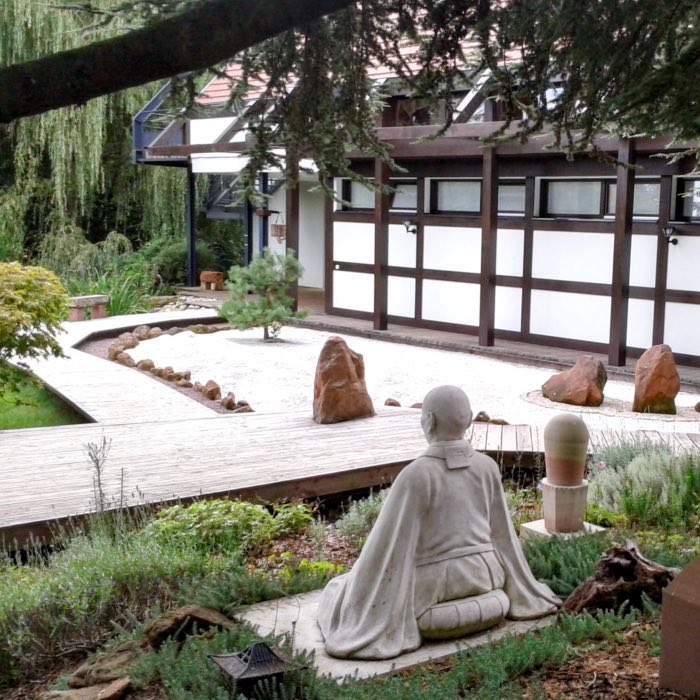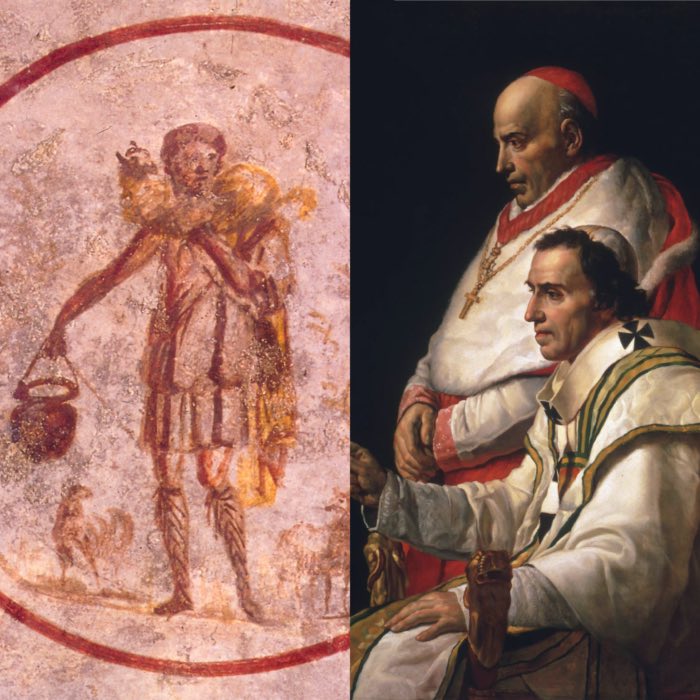Autobahnkirche Medenbach
While on a road trip to Mainz, I had an unexpected encounter at a highway rest stop: the Autobahnkirche Medenbach. Tucked away in an area typically associated with traffic and noise, this minimalist chapel was a strong contrast to its surroundings. The experience of stepping inside the chapel’s area was like shortly entering another world – one of serenity, light and shadows. In an environment dominated by the rush of cars and the hum of the autobahn, this small structure provides a quiet refuge, offering a unique opportunity for reflection and rest. Here is a closer look at this small chapel and what I could find out about its history and design so-far.
 Autobahnkirche Medenbach with its angled glass roof.
Autobahnkirche Medenbach with its angled glass roof.
Architecture and design: A play of light and space
The Autobahnkirche Medenbach, designed by Professor Hans Waechter and completed in 2001, is a striking example of minimalist design merged with modern architectural elements. What stood out to me most was the way natural light shapes the chapel’s mood and atmosphere. The chapel has an angled glass roof which allows sunlight to filter in throughout the day, casting soft, shifting shadows that create a serene and contemplative environment. The chapel’s clean, angular lines and simple brick walls stand in stark contrast to the busy world outside, creating a sense of purity and focus.
 The Chapel. The large glass roof allows natural light to enter the chapel.
The Chapel. The large glass roof allows natural light to enter the chapel.
Inside, the modest scale of the building fosters a sense of intimacy, while the sparse decoration draws attention to the space itself. Despite its location near a bustling motorway, the chapel’s insulated design blocks out external noise, creating an oasis of silence and stillness.
Around the chapel, an atrium and a series of arcades frame the building, offering visitors a transitional space between the noise of the motorway and the calm interior. These elements, in keeping with the chapel’s minimalist ethos, provide a quiet area for reflection. The courtyard-like setting and arcades act as a buffer from the outside world, preparing visitors for the peaceful experience inside.
 Floor plan of the chapel with atrium.
Floor plan of the chapel with atrium.
 Outdoor area with arcades and trees.
Outdoor area with arcades and trees.
 Outdoor area with arcades and trees.
Outdoor area with arcades and trees.
 Glass doors entrance to the chapel.
Glass doors entrance to the chapel.
 A memorial plaque to the founder of the church, Alfred Weigle, placed in the atrium. The inscription reads: ‘Founded as an oasis of calm and contemplation for all people who want to escape the rush of everyday life and find peace in silent prayer. Good God, hold your hand of blessing over this house and its visitors’.
A memorial plaque to the founder of the church, Alfred Weigle, placed in the atrium. The inscription reads: ‘Founded as an oasis of calm and contemplation for all people who want to escape the rush of everyday life and find peace in silent prayer. Good God, hold your hand of blessing over this house and its visitors’.
History of the Autobahnkirche Medenbach
From a flyer that was provided at the chapel, I learned that the idea for the Autobahnkirche Medenbach was born out of a desire to provide travelers with a place of respite and reflection along the autobahn. The project was initiated by Alfred Weigle in 1991, inspired by his visits to the Autobahnkirche Adelsried. This vision gained momentum in 1996 when Father Junge introduced Weigle to Paul Schaaf, another advocate of the project. With Weigle’s commitment to financing the chapel and support from the church administration in Darmstadt, the parish board of Medenbach approved the project in 1997. A year later, land was purchased, and the architectural design competition was won by Professor Hans Waechter, with Professor Johannes Schreiter contributing the concept for the glass roof.
 Memorial plaque for the founder of the chapel: Alfred Weigle, born in 1933, died in 2018. The inscription reads: ‘Here he created an oasis of peace’.
Memorial plaque for the founder of the chapel: Alfred Weigle, born in 1933, died in 2018. The inscription reads: ‘Here he created an oasis of peace’.
Construction of the Autobahnkirche began in February 2000, with the foundation stone laid in June of the same year. Professor Nikolaus Gerhart designed the altar area, adding to the chapel’s distinctive features. The project progressed swiftly, and on March 30, 2001, the chapel was formally inaugurated. Since then, the Autobahnkirche Medenbach has offered travelers a peaceful and contemplative space amidst the hustle and noise of the autobahn.
Today the chapel is financed by donations and the sale of candles and scriptures.
 Inside the chapel, visitors have the possibility to light a candle and leave a prayer. The candles can be purchased on site.
Inside the chapel, visitors have the possibility to light a candle and leave a prayer. The candles can be purchased on site.
The phenomenon of Autobahnkirchen
The Autobahnkirche at Medenbach is part of a broader network of similar chapels along the autobahn system in Germany. The concept of Autobahnkirchen originated in 1958 with the construction of the first chapel in Adelsried, near Augsburg. These churches were created to serve travelers in need of a quiet break from their long journeys, offering a spiritual sanctuary in the midst of modern motor travel. There are now more than 40 Autobahnkirchen throughout Germany and other parts of Europe. They are interdenominational and welcome visitors regardless of their faith, designed primarily to offer a space for quiet reflection.


 Symbol for highway churches on traffic signs. Source: Wikimedia Commons (1)ꜛ, (2)ꜛ, and (3)ꜛ (license: CC BY-SA 3.0)
Symbol for highway churches on traffic signs. Source: Wikimedia Commons (1)ꜛ, (2)ꜛ, and (3)ꜛ (license: CC BY-SA 3.0)
In fact, these churches carry on an ancient European tradition of providing places of worship along key travel routes — much like the wayside chapels and pilgrimage churches that dotted medieval roads. In this sense, the Autobahnkirchen represent a modern adaptation of this tradition, catering to the spiritual and emotional needs of today’s mobile population. Beyond their religious functions, they also serve as architectural landmarks, each one unique in design and often created by prominent architects.
Conclusion
Autobahnkirche Medenbach is not just a place of worship but a sanctuary for the modern traveler. Whether someone is religious or simply seeking a quiet space to rest, the chapel provides an architectural and emotional contrast to the bustling autobahn. Its design, which uses light and space so effectively, creates an environment that encourages silence, contemplation, and peace.
References and further reading
- The flyer provided at the Autobahnkirche Medenbach
- Website of the Autobahnkirche Medenbachꜛ
- Wikipedia article on Autobahnkirchenꜛ
- Website of vrk Autobahnkirchenꜛ which contains a map of all Autobahnkirchen in Germany


















comments